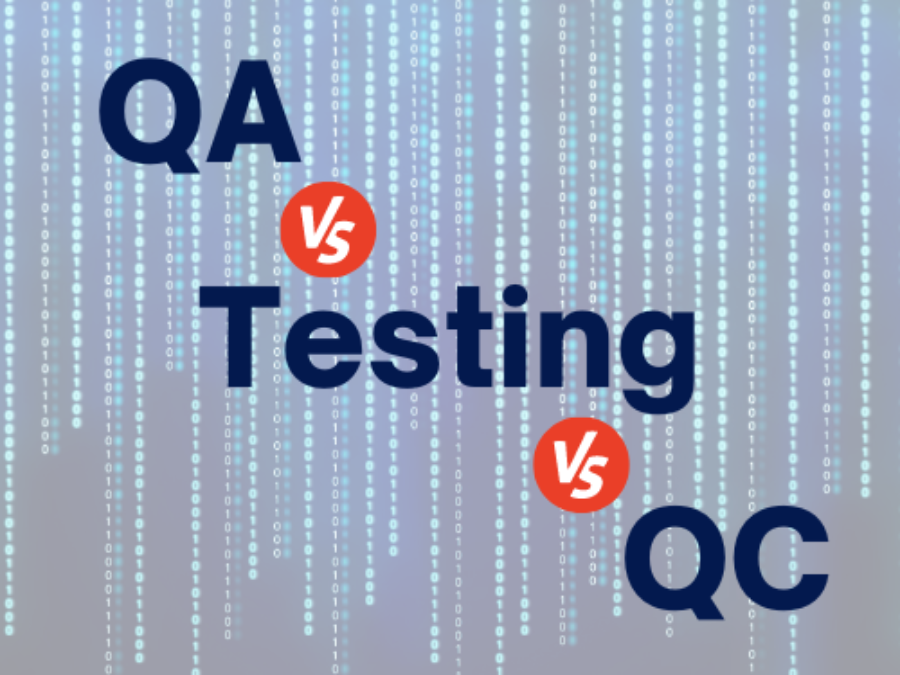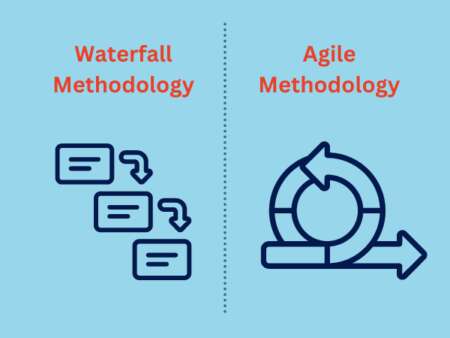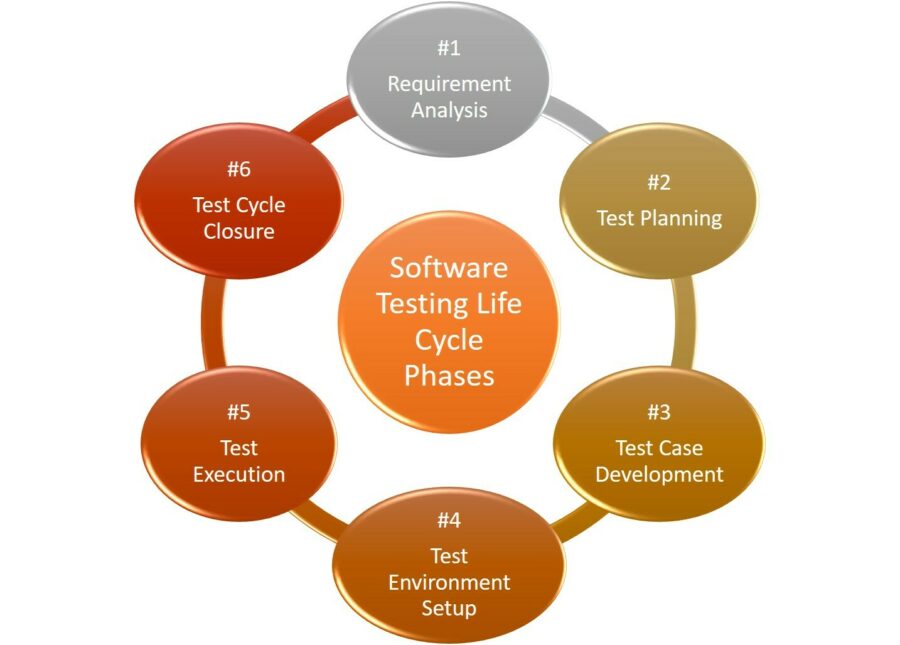Author

Blogs
Article & Observations About Diverse Teams Working Better Together
Understanding Quality Assurance for Software Testing

Quality assurance is an essential part of any software development process. Quality involves several measures taken to ensure the product being developed meets customer expectations in terms of accuracy, reliability, and performance. Quality assurance (QA) is the practice of verifying and validating that software meets certain standards before it is released. QA helps to ensure that the software meets the requirements, expectations, and needs of its users or customers.
As user expectations continue to increase, software development teams must ensure the quality of the products they release. Quality assurance is an important part of this process, as it provides a systematic way to identify any defects or issues before they become major problems.
This article will cover the general significance of quality assurance. Next, we will discuss quality assurance in software testing. We will describe the steps involved in the process and offer advice for implementing a successful quality assurance program. By following these guidelines, companies can guarantee that their software is of the highest possible quality and can be safely released to end users.
Understanding Quality Assurance for Software Testing
Overview of Quality Assurance
QA Role and Benefits
QA vs QC vs Testing
Quality Assurance in Software Testing
What is Software Quality Assurance?
Leveraging SQA to Improve Software Development Methodologies
SQA tools
QA process through Software Testing Life Cycle Model
Quality Assurance Best Practices for Software Testing
Conclusion
Overview of Quality Assurance
Quality Assurance (QA) is a crucial process used to ensure that all the components of a product or service meet the high standards set by the company, especially when considering the dynamic landscape of the information technology quality assurance company. It involves quality control (QC), a vital aspect that ensures products and services adhere to predetermined criteria, as well as the continuous development of strategies for improvement if necessary. A valuable resource for staying informed about QA practices and developments is a quality assurance blog, which often covers diverse software quality assurance topics.
QA, covering all aspects of development from concept to delivery, is designed to provide customers with products or services of the highest caliber. It ensures that production processes are efficient and effective while meeting customer requirements and expectations. QA also plays a pivotal role in security testing, identifying potential risks associated with a product or service before it enters the market, and ensuring that any security issues are addressed before they become costly problems.
Ultimately, Quality Assurance is a comprehensive and proactive approach to product development in the information technology sector, where the right software quality assurance tools can significantly enhance the process.
QA Role and Benefits
The role of Quality Assurance is paramount in ensuring that a product or service from an information technology quality assurance company meets the predetermined quality standards set by the company. QA delivers benefits throughout the entire product lifecycle, from concept to delivery, making software testing services an integral part of the process.
During development, QA can identify potential risks in design and functionality before they become expensive problems further down the line, showcasing the proactive nature of user acceptance testing. Once a product is released, QA ensures that all components meet the agreed-upon quality standards and verifies its performance on an ongoing basis, utilizing effective testing services.
QA also helps ensure customer satisfaction by guiding how best to use the product or service to get the most out of it. This customer-centric approach aligns with the principles of a quality assurance blog, emphasizing the importance of user satisfaction and the latest software quality assurance topics. Ultimately, Quality Assurance offers significant product or service quality and customer satisfaction benefits. Additionally, QA can help reduce costs associated with returns, rework, and repairs by identifying and addressing potential issues early on in the process.
By taking a proactive approach to Quality Assurance, companies, especially those in the information technology sector, can remain competitive in their respective markets and maintain customer loyalty.
QA vs QC vs Testing

The processes of Quality Assurance (QA), Quality Control (QC), and Testing are related but distinct from each other. They are often mistakenly used interchangeably, although they each have different meanings and are used during different stages of product or service development.
QA is a systematic process of verifying and enforcing the standards of an organization’s products or services. The purpose of QA is to ensure that products are designed, developed, and delivered according to the organization’s standards. This process includes establishing procedures, methods, and tools for measuring quality, as well as evaluating product performance against those measures.
QC is a process of monitoring and verifying product quality at every stage of production. QC focuses on identifying defects and flaws in the product before it reaches the customer. This includes inspecting, testing, and taking corrective action if needed.
Testing is the process of evaluating a product to ensure that it meets certain criteria. Testing involves executing a program or application with specific input data, assessing whether the output is as expected, and validating any other associated requirements. It is an important part of the development process, as it helps to identify flaws in the product and ensure that it meets customer requirements.
QA focuses on providing guidance to development teams in order to ensure that all components meet the predetermined quality standards set by the company, while QC ensures that these standards are being met. Testing, on the other hand, ensures that a product or service performs as intended when put into use.
Overall, Quality Assurance, Quality Control, and Testing are three distinct processes that work together to ensure the highest quality product or service possible. By taking a comprehensive approach to development and ensuring that all components meet predetermined standards, companies can remain competitive and maintain customer loyalty.
Quality Assurance in Software Testing
In the previous section, we covered quality assurance in general terms. Let's now shift our focus to quality assurance in the context of software testing.
What is Software Quality Assurance?
Software testing is an essential part of the software development life cycle as it ensures that all components meet predetermined quality standards and have no bugs or errors. Quality assurance in software testing, commonly referred to as SQA (software quality assurance), is an ongoing process used to ensure the quality of software products through rigorous testing and evaluation.
It involves creating a comprehensive set of processes and tools for verifying the quality of software products and services. This includes defining KPIs and metrics, developing a clear test plan, leveraging automation capabilities, ensuring cross-platform compatibility of applications, using inspections and reviews, monitoring test results and outcomes, and engaging in continuous improvement.
SQA also helps ensure that software development methodologies are followed, such as the Software Testing Life Cycle (STLC) Model, for efficient and effective product release. With the help of SQA, organizations can confidently deliver high-quality products to their customers on time and within budget.
=>Learn more about how software quality assurance is applied in real-world scenarios - read about Iterators' case study.
Leveraging SQA to Improve Software Development Methodologies
Software development methodologies are frameworks used by software developers throughout the software development life cycle (SDLC). They provide structure and guidance to the development team and allow them to efficiently create high-quality software.
Software Quality Assurance is a key component that can help improve the efficacy of software development methodology. SQA ensures that software products meet predetermined quality standards and have no bugs or errors. It involves creating a comprehensive set of processes and tools for verifying the quality of software products and services, such as defining KPIs and metrics, developing a clear test plan, leveraging automation capabilities, ensuring cross-platform compatibility of applications, making use of inspections and reviews, monitoring test results and outcomes, and engaging in continuous improvement.
Software development methodologies can be divided into two main categories – Waterfall and Agile. The Waterfall methodology follows a linear process, where each phase is completed before progressing to the next one. This approach focuses on producing an end result that meets all of the requirements at once.
The Agile methodology takes a different approach, focusing on a process of continuous improvement. This approach is suitable for projects that require frequent change or adaptation, as it allows teams to quickly adjust and react to new challenges. Agile methodologies can be further broken down into Scrum, Iterative, Spiral, and Rapid Development approaches. Each of these has its own advantages and disadvantages in terms of application and success rates.

Scrum is an iterative and incremental agile software development methodology. It follows an empirical process control that allows teams to respond quickly to change and deliver products in a timely fashion. Iterative development involves repeating the same steps over and over, gradually refining each step until the desired outcome is achieved. Spiral development combines elements of both waterfall and iterative approaches, allowing for a gradual refinement of the product with each iteration. The Rapid Development approach focuses on quickly producing software that is of acceptable quality by utilizing rapid prototyping and iterative development techniques.
Regardless of which particular software development methodology is implemented, its success is largely contingent upon the SQA process that accompanies it. Through thorough testing, inspection, and review processes, SQA can help ensure that any software product meets its intended quality standards. Moreover, by incorporating continuous improvement in these SQA practices, software organizations are better equipped to identify and address issues prior to release.
SQA tools
In addition to software development methodologies, SQA also utilizes a variety of tools to ensure quality assurance throughout the software engineering process. These tools range from code integrity to bug tracking and test management systems.
Code integrity tools help identify errors and potential security vulnerabilities in the source code, while bug tracking and test management systems help track and manage any reported bugs or issues that need to be addressed during development. Using these types of tools helps teams quickly identify problems and find solutions, thereby leading to higher quality and more reliable end products.
Examples of code integrity tools include static analysis tools such as SonarQube and Coverity, dynamic analysis tools such as ParasoftC++ Test, and compiler-based tools such as Microsoft Visual Studio. Examples of bug-tracking systems are JIRA and Bugzilla, while popular test management tools include TestRail and HP Quality Center.
In addition to using these tools, software teams also need to use both manual and automated testing methods. Manual testing involves the actual execution of tests by a tester or team of testers while automated testing involves running tests through tools such as Selenium or Cucumber.
Automated tests are more efficient in terms of resources and time but require deeper knowledge and expertise from the software tester. Manual tests can be used to supplement automated testing, ensuring that no critical elements remain untested.
=>Related resources: Manual Testing Tools, Mobile Application Testing Tools.
Overall, software quality assurance is a critical element of successful software engineering processes. By leveraging development methodologies, SQA tools, and testing techniques, software teams are better equipped to ensure the highest levels of reliability.
QA process through Software Testing Life Cycle Model
The QA process can also be managed using the Software Testing Life Cycle (STLC) Model. The STLC is a framework that helps guide teams through the entire software testing process from start to finish. It includes the various steps that are necessary for successful software testing.

=>Learn more about STLC phases in this article.
By following this framework, teams can ensure that their software is tested thoroughly and that any problems or bugs can be quickly identified and addressed before the software is released to the public.
Quality Assurance Best Practices for Software Testing
Quality Assurance best practices for software testing are important to ensure that any software created meets its intended quality standards. These best practices include:
1. Defining KPIs and metrics for Quality Assurance – the key performance indicators (KPIs) and metrics used to measure the success of a software project should be established from the onset and monitored throughout the project. This helps to track progress and ensure that quality standards are being met.
2. Developing a clear and comprehensive test plan – a well-defined test plan provides guidance on what needs to be tested, how it should be tested, when it should be tested, as well as who is responsible for carrying out the tests.
3. Leveraging test automation capabilities to save time and resources – automated testing tools can be used to reduce the amount of manual effort involved in software testing, thereby saving time and resources.
4. Ensuring cross-platform compatibility of applications – it’s important to test applications on different platforms and devices so that they are compatible with multiple systems.
5. Making use of inspections and reviews – software inspections and reviews can help identify potential defects in the code before it is released to the public.
6. Monitoring test results and outcomes – regularly tracking test results and outcomes help teams ensure that their product meets quality standards before releasing it.
7. Engaging in continuous improvement of testing processes – as technology advances and new requirements emerge, teams should continually strive to improve their testing processes to ensure they are up-to-date with software testing industry standards.
By following these best practices, teams can help ensure the quality of the software they develop and release is of a high standard. Quality assurance is an important part of software development and can help ensure the success of any project.
Conclusion
Software quality assurance (SQA) is a critical element of successful software engineering projects. SQA involves the use of development methodologies, SQA tools, and testing techniques to ensure the highest levels of reliability in a product before it is released to the public. QA teams can use the Software Testing Life Cycle Model (STLC) as a framework to manage the QA process. Additionally, there are several best practices that they must follow. Ensuring quality through proper assurance is crucial in software development and can greatly contribute to the success of a project.
Related Resources:
About the Author
David Willcox graduated with a Bachelor of Science from Tulsa University having double majored in Chemical Engineering and Mathematics. He earned his doctorate in Chemical Engineering from Northwestern University. He has a broad background in education, industry and software testing. David has written software for 40 years, starting with BASIC, which was originally stored on yellow punch tape. Since that time, David has expanded his skills and is proficient in Assembly Language, Pascal, C, Objective-C, Visual Basic, C#, LabVIEW.NET, Python, R, HTML and JAVA.

